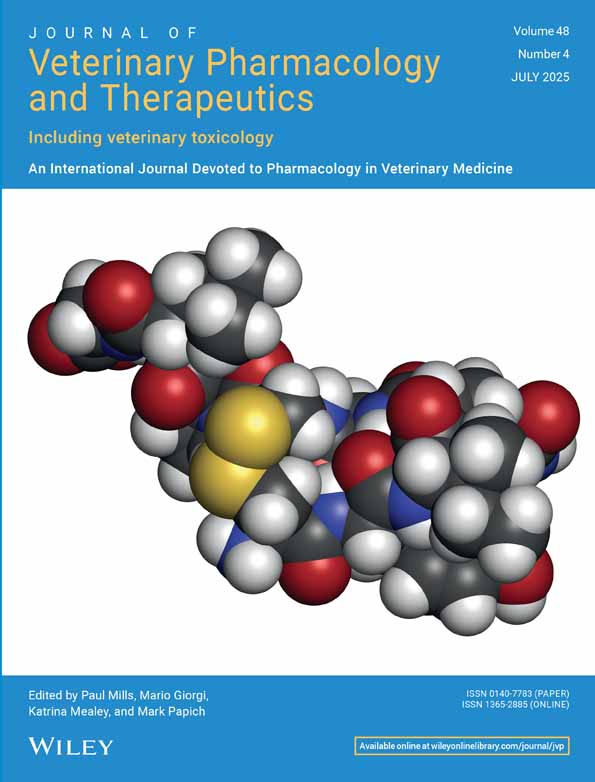Distribution of Alprazolam Into the Milk of Lactating Mares and Subsequent Absorption by Nursing Foals
Funding: This work was supported by University of California, Center for Equine Healthy, School of Veterinary Medicine, Roberta A and Carla Henry Endowed Chair in Emergency Medicine and Critical Care, School of Veterinary Medicine, University of California Davis.
ABSTRACT
Alprazolam is used to facilitate mare–foal bonding in aggressive or anxious postpartum mares. In humans, alprazolam crosses the blood–milk barrier, but the amount transferred into milk is minor and compatible with breastfeeding as the relative infant dose is < 10%. Similar data are not available for horses. The aim of this study was to measure alprazolam in serum and milk of mares (milk: serum ratio) administered alprazolam, and to determine alprazolam serum concentrations in nursing foals to estimate the extent of absorption. This was a prospective observational study involving 7 healthy postpartum mares and foals. Mares received alprazolam (0.04 mg/kg PO, q12h) for 6 days. Venous blood and milk samples were collected on days 3,4,5 and 6, just before the next dose, and were used to calculate milk: serum ratios and estimate the extent of absorption of alprazolam by foals. A validated liquid chromatography–tandem mass spectrometry assay was used to measure alprazolam and α-hydroxyalprazolam. There were no significant differences in concentrations of alprazolam or α-hydroxyalprazolam in mare serum, milk, or foal serum over time, consistent with steady state and a lack of accumulation. Milk:serum ratios were similar to slightly higher than those reported in humans (median: 0.64; range: 0.42–3.0). Relative foal dose (RFD) based on 12 h concentrations was < 10% in all foals and in 96% of total samples. Foal serum concentrations of alprazolam were 6.6% ± 4.1% of those in mare serum at the same time points. This study shows that milk:serum ratios of alprazolam in mares are variable. Foal serum concentrations and RFD suggest that alprazolam is safe for use in mares with nursing foals.
Conflicts of Interest
The authors declare no conflicts of interest.
Open Research
Data Availability Statement
The data that support the findings of this study are available on request from the corresponding author. The data are not publicly available due to privacy or ethical restrictions.




